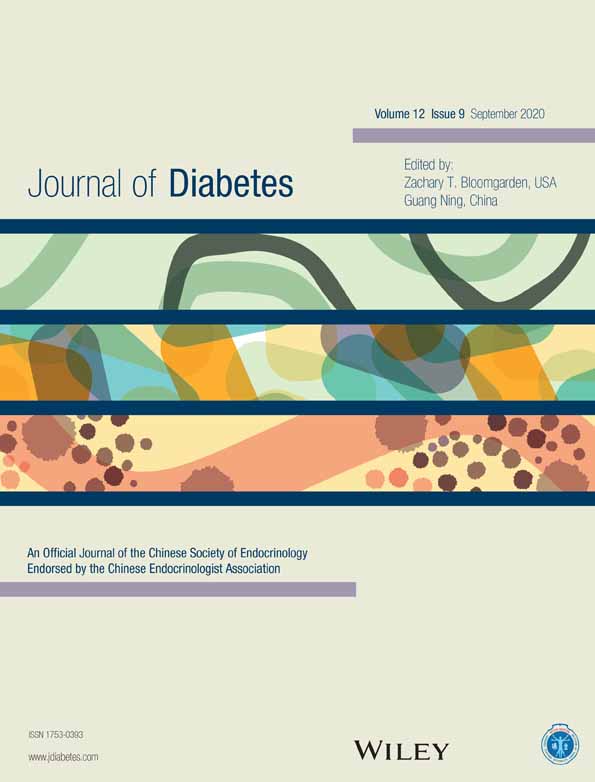Patient characteristics and 6-month dose of basal insulin associated with HbA1c achievement <7.0% in Chinese people with type 2 diabetes: results from the Observational Registry of Basal Insulin Treatment (ORBIT)
接受6个月基础胰岛素治疗糖化血红蛋白(HbA1c)达标(<7.0%)的中国2型糖尿病患者特征:来自基础胰岛素治疗登记观察性登记研究(ORBIT)的结果
Funding information: The study was funded by Sanofi-Aventis(Shanghai, China). The funders had no role in the design and conduct of the study, nor the decision to submit the manuscript for publication.
Abstract
enBackground
The efficacy of basal insulin (BI) for adequate glycemic control in patients with type 2 diabetes mellitus (T2DM) has been well documented by randomized clinical trials. This post hoc analysis of the Observational Registry of Basal Insulin Treatment (ORBIT) study was performed to explore the 6-month dose of BI used in insulin-naïve T2DM patients achieving HbA1c target (<7%) and determine the patient characteristics that affect the 6-month dose of BI in the setting of real-world clinics in China.
Methods
This multicenter observational registry screened 19 894 adult T2DM patients with inadequately controlled hyperglycemia and treated with oral antidiabetic drugs (OADs) in China. Of these patients, 5191 who continued to receive BI after 6 months and achieved HbA1c target were analyzed. Patient characteristics including age, body weight, fasting plasma glucose (FPG), use of OADs, insulin (type and dose), and glycemic control were recorded at baseline and 6-month follow-ups.
Results
The 6-month dose of BI needed for effective glycemic control was 0.20 ± 0.08 U/kg/day. High body mass index, high FPG, young age, longer duration of diabetes or OAD treatment, a greater number of OADs at baseline, and allocation to detemir and glargine were significant independent predictors for high dose of BI at 6 months.
Conclusions
This post hoc analysis of the ORBIT registry provides key information on the 6-month dose of BI needed for effective glycemic control in Chinese T2DM patients. Furthermore, it identified crucial patient characteristics that are significant determinants of the dose of BI in a real-world setting.
摘要
zh背景
基础胰岛素(BI)对2型糖尿病(T2DM)患者血糖控制的有效性已被随机对照临床试验所证实。这项来自ORBIT研究的事后分析旨在探讨既往未接受胰岛素治疗的中国T2DM患者, 在临床真实世界中接受基础胰岛素治疗6个月后, HbA1c达标(<7%)患者的基础胰岛素剂量及其相关特征。
方法
ORBIT研究在中国采用多中心观察性研究方法, 共筛选入组19894例接受口服降糖药(OAD)治疗但血糖控制不佳的2型糖尿病患者。本研究对其中5191例持续接受BI治疗6个月且HbA1c达标(<7%)的患者进行了分析。收集的患者特征包括基线和随访6个月时的年龄, 体重, 空腹血浆血糖(FPG), OAD使用情况, 胰岛素的类型和剂量以及血糖控制情况。
结果
治疗6个月时血糖达标患者的BI剂量为0.20±0.08U/kg/d。高体重指数, 高FPG, 年龄小, 糖尿病病程或OAD治疗时间较长, 基线OAD种类多, 接受地特胰岛素或甘精胰岛素治疗是6个月时较高BI剂量的独立预测因素。
结论
这项ORBIT研究的事后分析提供了启动基础胰岛素治疗6个月的中国2型糖尿病患者血糖控制达标所需BI剂量的关键信息。此外, 该研究明确了在临床真实世界中影响基础胰岛素剂量的患者特征。




